– a personal odyssey through cultural education & where Bharatanatyam is headed in Singapore By Vidhya Nair
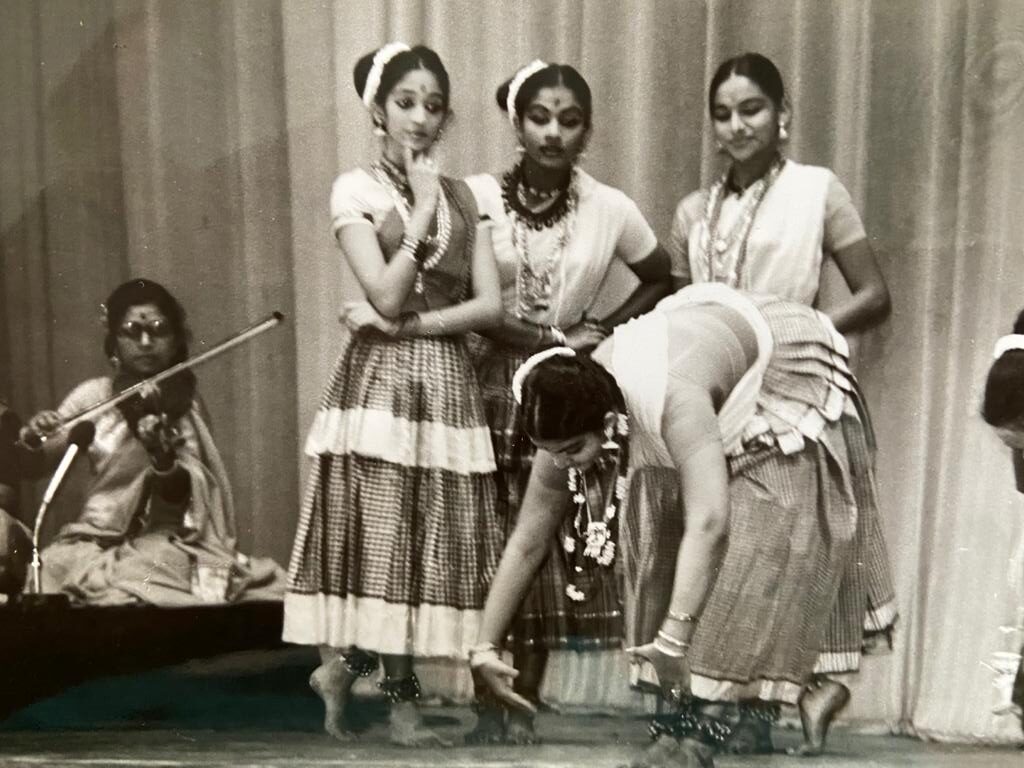
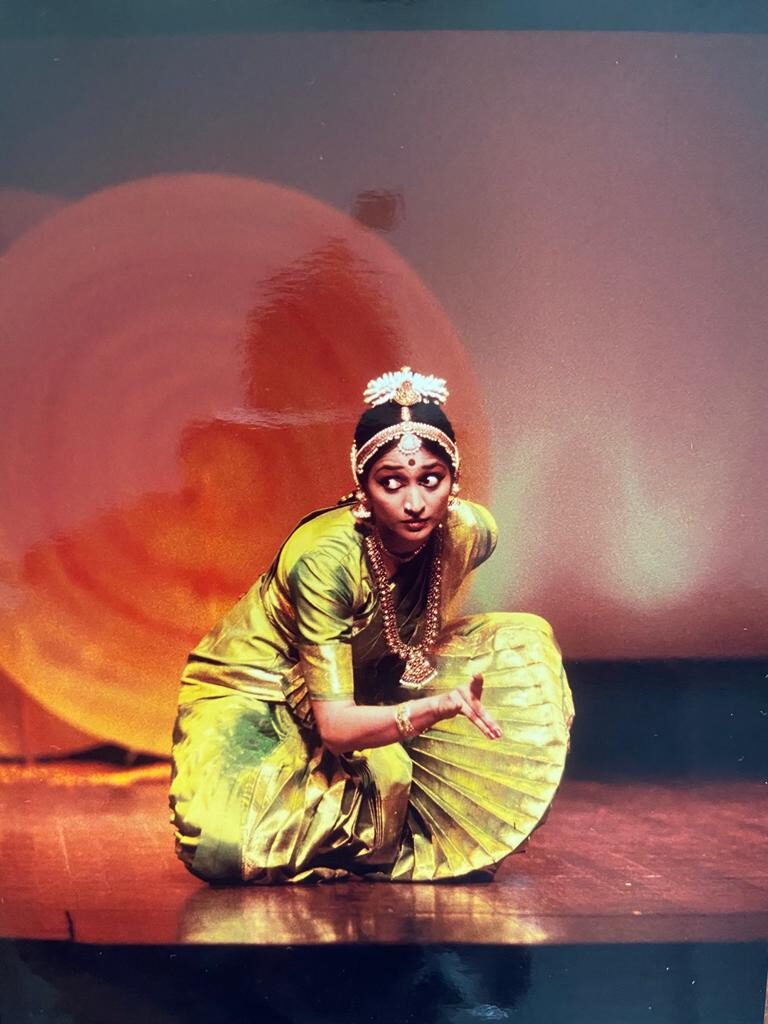
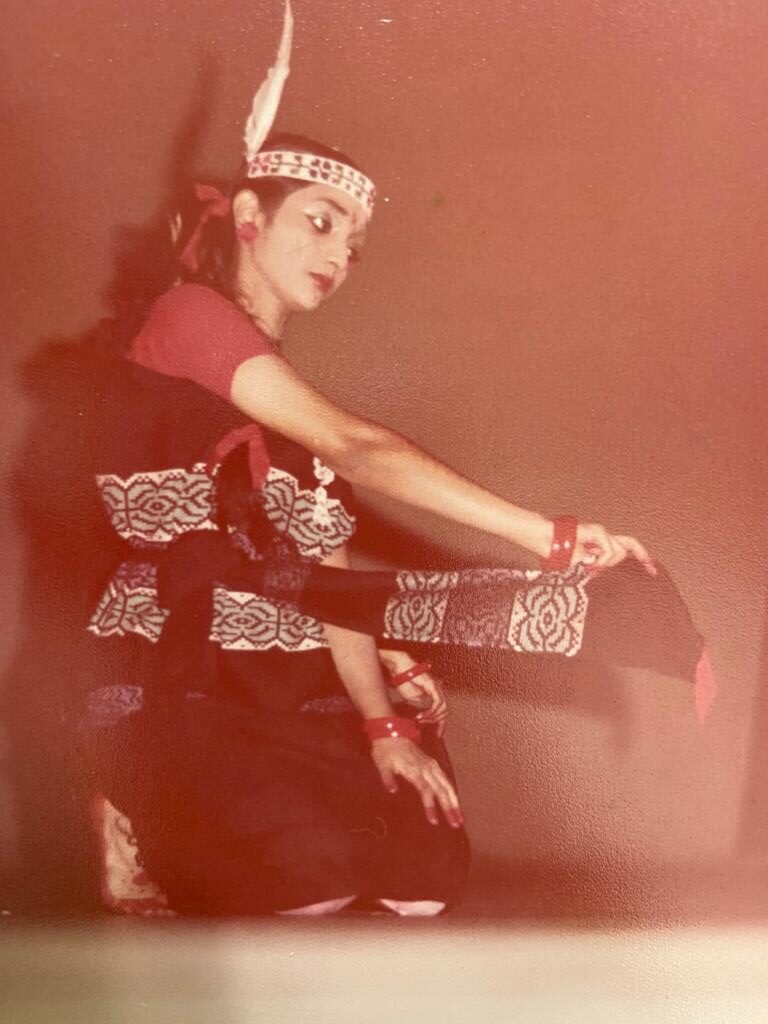
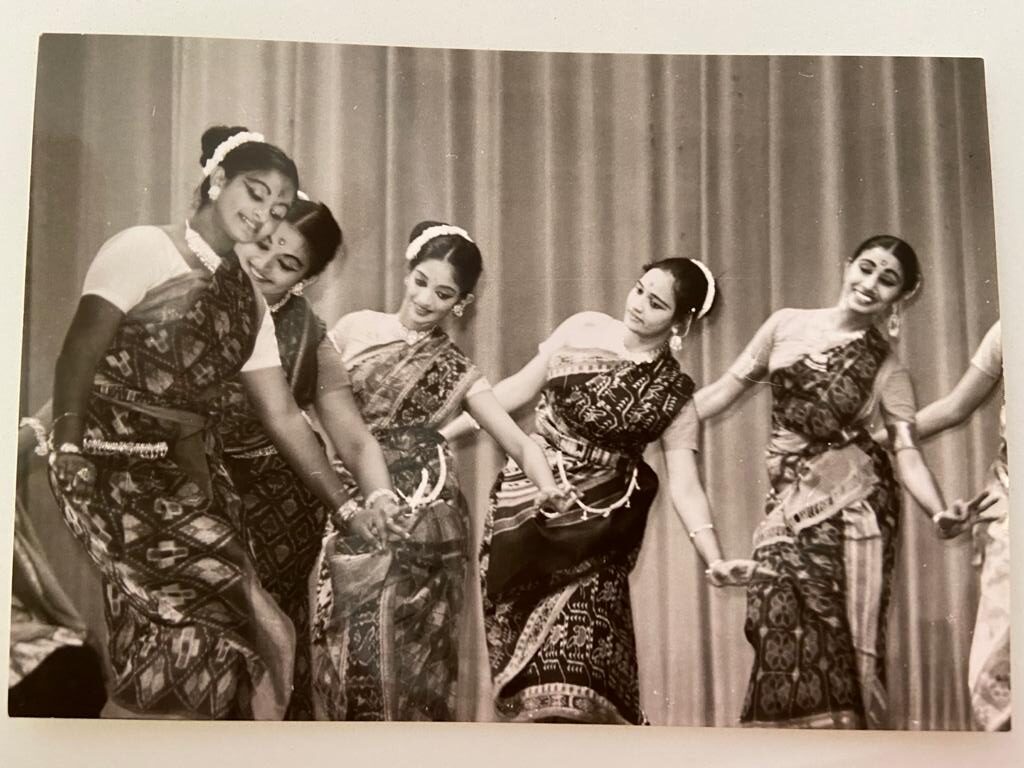
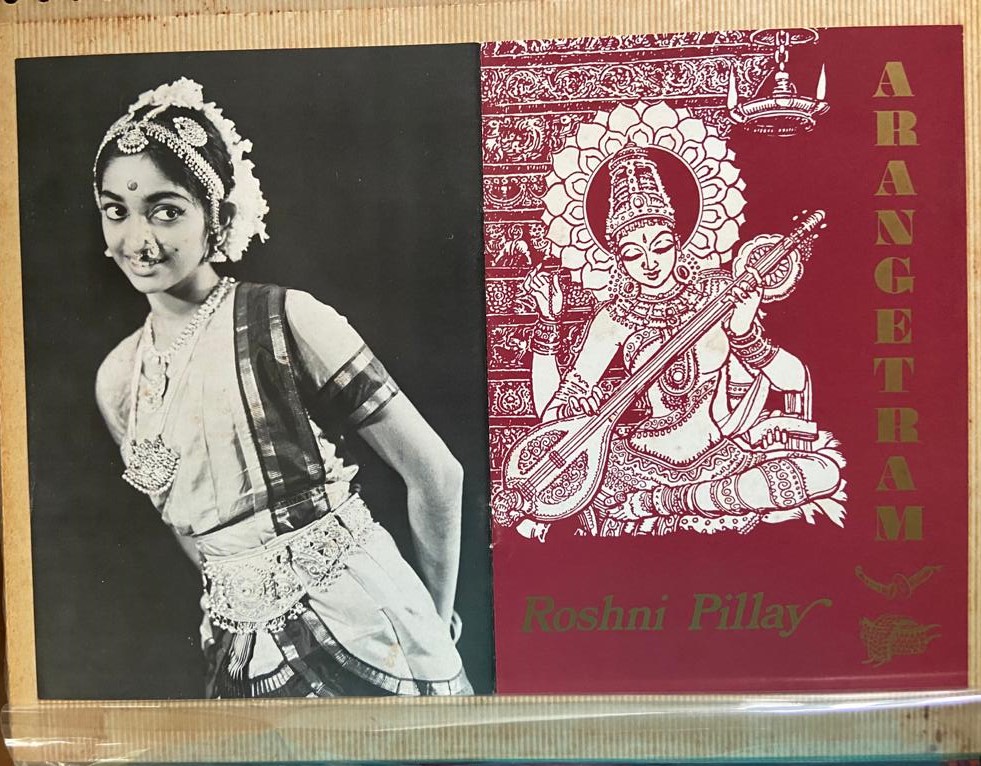
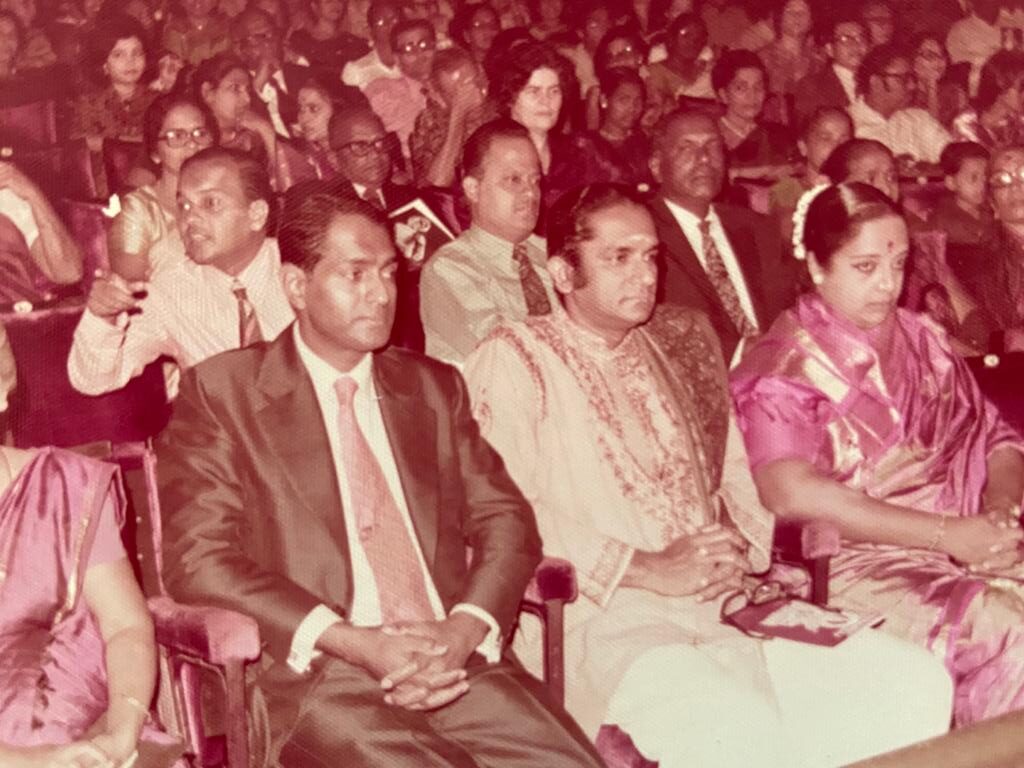
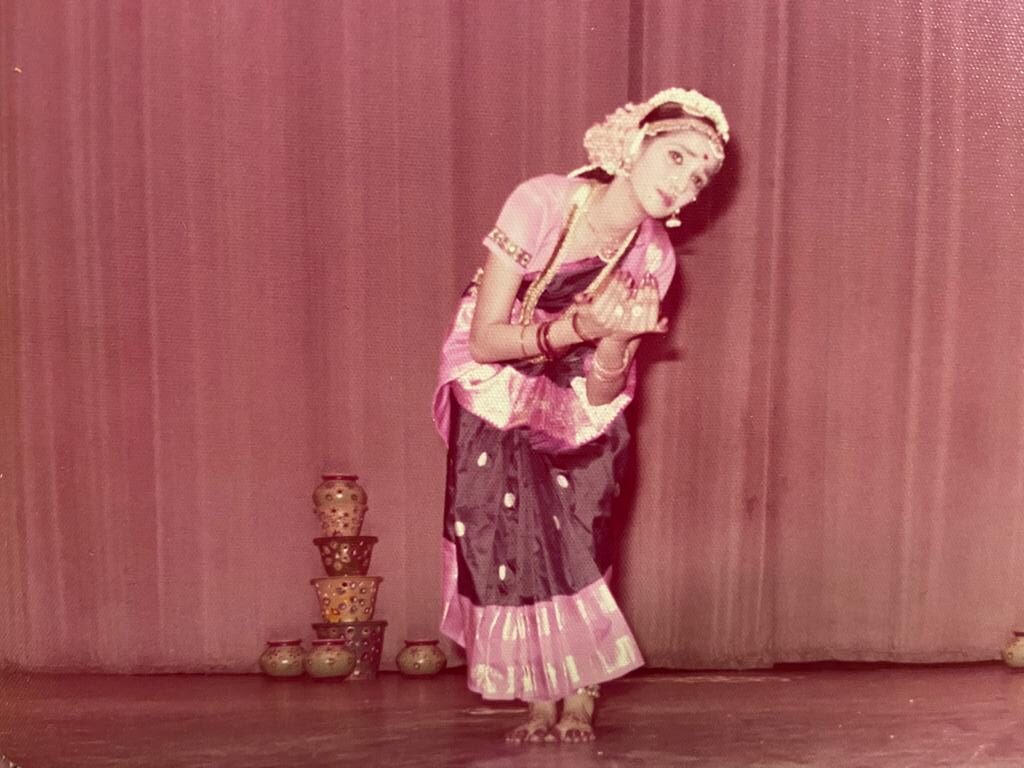
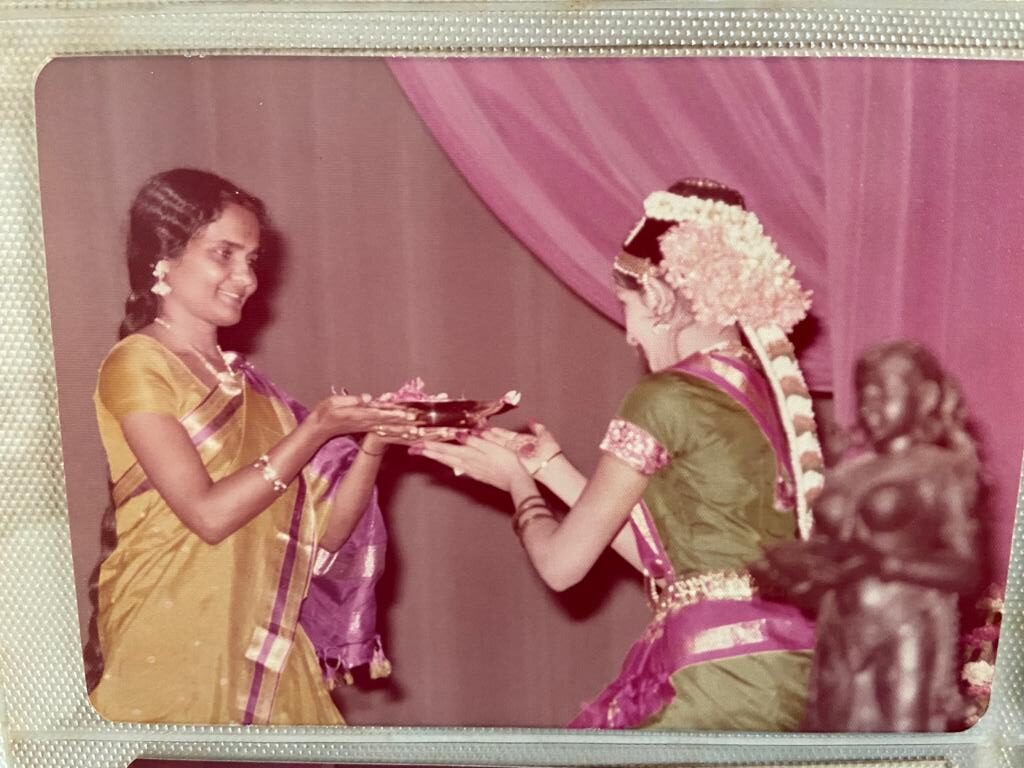
VN: Tell us about yourself – your roots and growing up years? RPK: I come from a Ceylon-Tamil family with deep roots in Malaysia-Singapore for several generations. My father’s family is entirely from Seremban. (Dr V K Pillay, a well-known orthopaedic, community leader and philanthrope). He came to medical school in Singapore and met my mother whose entire family was here. My parents initially lived in Seremban but due to the separation of Malaysia-Singapore and my father’s medical training, they settled permanently in Singapore. Some of our family have since migrated to other countries. I am a third generation Singaporean- and my entire exposure to Bharatanatyam and all the training I received was entirely in Singapore. I consider myself a product of the unique cultural scene here; always comfortable in my pottu and pavada sattai yet I was educated at an English convent (CHIJ Victoria Street). I feel it’s a reflection of this country, multiculturalism has enabled those of us from a minority culture to feel rooted in our identity yet able to be part of a larger milieu. My mother and my aunts had learned Carnatic violin as children and my father really appreciated Carnatic music. Growing up with three older brothers, we all went for piano classes but anything pertaining to Indian culture was for the daughter not the sons. Perhaps this is a peculiarity of Ceylon-Tamil families. I always accompanied my parents for Indian cultural events but not my brothers. I think the first they ever attended was my Arangetram in 1975! I had an older maternal cousin, Jayalakshmi (Jaime akka) who was a dancer, a student of Mrs Bhaskar. Growing up I saw many pictures of her in dance poses. She was my first image of a dancer within the family. Another was a paternal cousin, Shymala from Malaysia, who went to Kalakshetra to earn a post-grad diploma in the days when Neila Mami was teaching there. I have a memory of visiting my cousin and watching Mami take class there. Shymala would tell me “She is the gentlest teacher here.” My cousin would share the rigour of murumandi jumps – a series of 100 sets. If you stopped at 90, you would be asked to repeat all over again! Imagine the gruelling training! That cousin really inspired me. The first dance kutcheris I watched in Chennai were with her. Tamil was really a language I didn’t speak fluently. I had learnt Malay in school so my exposure to it was really exchanges with my grandmothers who lived with us on occasion and I never really spoke Srilankan-Tamil either. I did have a Tamil vadhiyar come home for tuition as a 3rd language, but my parents felt fluency in Malay outweighed Tamil as it was a more useful regional language . Immersion in Indian culture was not 24/7. So time spent with my dance teacher, Madhavi Muthu and veena teachers, Muthumeenakshi Mami and Padmavathy Anandagopalan (sister of Lalgudi Jayaraman) at SIFAS was key to my cultural development. They were strict and deeply entrenched in the culture. We visited India like tourists. It’s only as I have grown older, I have absorbed the culture more. The encouragement of my parents and the Bharatanatyam friends I had in my teens (the Avadhani & Natarajan sisters) kept my interest going. I never acknowledged myself as a “Dancer” or saw myself as one growing up. It’s unusual I think but that’s been my experience. You learn for the art’s sake; it doesn’t define your personality. In fact, even in my husband’s family the exposure to Tamil and Indian culture was minimal. There was more appreciation for Western performing arts like ballet and classical western music and English was the only language spoken at home. So, my performing Bharatanatyam was like a unique, new experience for them. VN: How did your dance training begin? RPK: My dance training began formally at SIFAS, first with the Narasimhacharis in 1970-72 in Kuchipudi. I didn’t even know it as that then. It was just learning of items not a style as such. Then it was Madhavi Muthu with formal structured Bharatanatyam. I recall fainting in my first class, as a young skinny child, the rigour of the exercises was quite overwhelming. I had to be revived with Milo! The routine was Veena and Bharatanatyam. My father was a fan of Veena S Balachander, Chitty Babu whose recitals he would play on his record player. I was also privileged to meet these artistes when they came to Singapore . I was also learning Carnatic Vocal from Anandagopalan Maama( my Veena teacher’s spouse). My days were filled with classes. Back then, it was twice a week for 2 hours for each subject, so lots of hours are spent on the road and in class. During school holidays, there were even more classes. The time after my A levels was especially special as I spent a lot of time with Padmavathy Mami. I had so many lunches cooked by Padmavathy Maami, when SIFAS was located at the large bungalow at Bournemouth Road. I still remember her delicious podis (not a part of the Ceylon Tamil culinary repertoire)! Back then, time was unlimited but over the years as the school grew and more students joined, the pressure to allocate a fixed time for students normalised. Today, we see SIFAS as an institution but then it was a modified Gurukulam. As there were less students, there were more opportunities to perform. The Society committee members were also very paternal-maternal offering so much support and encouragement. During my arangetram rehearsals Aunty Kokila Rajan, Dr Rajan, Mr I S Menon would come by to watch. It was a wonderful environment to have cultural immersion. I enjoyed the nurturing environment at SIFAS. We also watched amazing performances. I recall watching Lakshmi Viswanathan who was a young dancer then with her sister Charumathi Ramachandran singing. It was so beautiful. There were many recitals by famous Indian artistes. My parents took me for every single one (not my brothers!) 3-hour kutcheris! I often feel asleep before the program was done. But the first katcheri that I watched completely mesmerised was that of Yamini Krishnamoorthy. I was an 8 year old then. Coping with school and dance occupied all my time so taking up other CCAs added to my load. I ended up with Track & Field and LDDS. I had no free time to participate in any plays or practices because dance and music occupied me fully. It was like living a double life! In the 1970s, RTS (Radio Television Singapore) produced Indian cultural programs. I recall even singing in a children’s group program for radio. I had the opportunity to perform a half hour solo for a televised Bharatanatyam series with senior dancers soon after my arangetram when I was only in Secondary one. I was quite lucky to get that kind of exposure. Neila Mami also presented Bharatanatyam works for television in the days of producers like Velu Vijayan and Kalaichelvan in the 1980s and I had the opportunity to perform in these. My last televised solo was in 2002 when I presented segments of my production ‘Maya’ over 2 half hour segments for Vasantham with live accompaniment. Babu Parameswaran sang for this. These opportunities will probably not be available to young dancers now. VN:What are your distinct memories about your arangetram? RPK: The 1975 arangetram when I was 13 was at Victoria Theatre and attended by many of my parent’s friends. Professor S Rajaratnam who was then Minister of Culture was the Guest of Honour. He was my father’s cousin so I must have taken it for granted that Uncle Raja came. What amazes me is how people made time to watch a child dance for 3 hours! There was so much encouragement from the community. Interestingly, Neila Mami and Sathyalingam Mama were special guests at my arangetram! They had just recently relocated to Singapore. VN: How did you begin training with Neila Mami? RPK: My journey in dance with Neila Mami began soon after my arangetram when Madhavi teacher returned to India. I learned under Mami for many years , though one year, when Balagopal Sir and his wife from Kalakshetra came to SIFAS to teach, Mami allowed me to learn some items from them. She herself had brought Adyar Lakshmanan to teach me and her other students and encouraged learning from various other teachers. Before I left for the UK for university studies, I did a full Margam with Mami (with some items by Adyar Lakshmanan) for a fundraiser for the Hindu Centre. Karaikudi Krishnamoorthy sir had been employed at SIFAS at that time and it was a great privilege to have him for mridangam accompaniment. Doing fundraisers became a norm for me as my parents were involved in the community so I did several shows that helped raise money. Though my first teacher, Madhavi Muthu, had also been a Kalakshetra graduate, with Neila Mami, the training went back to basics as she wanted perfection in every gesture and step. I had to start again and practise adavus to perfect them. Madhavi teacher had taught me many of her own choreographies but Mami taught me items from the Kalakshetra repertoire, many choreographed by Rukmini Devi herself. Her teaching when she first started in Singapore was very traditional before she began her collaborations with People’s Association. It was a lot of fun with her classes in Kamala Club and Tanglin Community Centre. We also had several performances and I was dancing with her daughters ,Mohana and Nandana. They had trained in Kalakshetra and become accomplished in dance at a very young age. Watching them dance, I also learned from them. Mami was also demonstrative in her teaching especially in abhinaya. Around this time, Jayanthi Natarajan had gone to Kalakshetra to learn becoming an inspiration for us. So too was Shanta Ponnambalam, another Singaporean Kalakshetra diploma holder, an amazing dancer with perfect nritya. They were the examples of how to do it right. I went to the UK , University of Bristol, for 2 years to study medicine in 1981-82. [ but completed my degree in NUS, one of the first to be transferred from overseas]. I was one of 2 Asian girls at that time. It was surreal and unfamiliar. My only overseas trips till then had been to India and almost always to Puttaparthi. My mother came along with me [ after having given up her job as an Economics teacher at Catholic Junior College]. I’ve always thought that my parents did this because they were so concerned that I should not lose my culture! I carried a number of the recordings with me and every Wednesday which was a half-day, I would practice. My mum would watch over me and give her critical input. It was so unusual that our English neighbour knocked on the door to ask why there was so much noise and if we were “pounding flour for chapati?” and asked us to refrain from doing it. I had to find a more creative way to practice whenever the neighbour was out. After I returned, I resumed classes with Mami and while in the 3rd year of medical school, performed with Nandana & Maheshwari (another SIFAS graduate who also started to learn from Neila Mami) for a fundraiser in honour of the late DR V S Rajan (Mrs Kokila Rajan’s husband). It was a treat practising at Mami’s house and seeing the comraderie between Sathyalingam Mama, Mami and Krishnamoorthy sir. VN: How did you evolve to be a dancer? RPK: My father was keen for me to be a doctor like the rest of my siblings and as Sathya Sai Baba devotees, they asked him for advice – “Should our daughter do medicine or dance, Swami?” His advice – “Let her not be known as a dancer, let her be known as a doctor”. Interestingly, Baba materialised for me a Nataraja locket when I was 17 years old which I wear all the time till today. I never realised why he gave me this all those years ago until now. Mami instilled my love for dance but it is because of my spiritual guru, that I am still doing it now and see my path in it – in teaching underprivileged children. Neila Mami always told me that I had Swami’s blessings. Mami had an amazing way of imparting the art. She would not reprimand but show you how it’s done. It was always so lovely to watch her show abhinaya. I remember the Padam, “Mukhathe Kaatiya” – a slow moving piece but so beautiful when Mami described it and offered ideas for variation. Mami also shared stories about great dancers like T Balasaraswati, Rukmini Devi all incidentally in dance class. Dance was her whole world. So, she brought you into that world of the Greats. Her sharing of the beauty of her world. It was a glimpse. Today when I read about them, I feel so connected because of all that Neila Mami has shared. She passed on her passion which was so genuine. A rare quality of Mami is that she wanted to share her art with everyone and I think she achieved that by making it accessible to the larger community through her work with the People’s Association. After I graduated from NUS in medicine [ Roshni practices family and aesthetic medicine], I married [Prof Kesavan Esuvaranathan, Senior Consultant, Department of Urology, NUH] and returned to dance lessons with Mami at Cairnhill Community Centre till after I had my three children (a son and two daughters). Life as a doctor and running the family, there was a lapse in my learning. It was too difficult to manage all of it in the early years with the growing children. In the late 1990s, my mother had recommended for my daughter to learn from Maalikka Girish Panicker who had started teaching at SIFAS. She had seen her performance and felt my daughter would benefit for such a vibrant, young dancer. Maalikka encouraged me to return to the stage with her choreography and the opportunity came as a fundraiser in 1999 for the opening of the Satya Sai Centre in Singapore. The performance and choreography was very well appreciated. I did a few more solo after that. 1n 2001, Maalika choreographed “Mirror of Love” and we danced as a quartet (including Priyalatha Arun and Vijayalakshmi Balendra). This was also presented at the Music Academy under the SIFAS banner. Maalikka invigorated my dance a lot and every time I performed, Mami would come as I was always acknowledged as Mami’s student. Both Satyalingam Mama and Mami were very happy to see me in this new phase, working with a young choreographer.
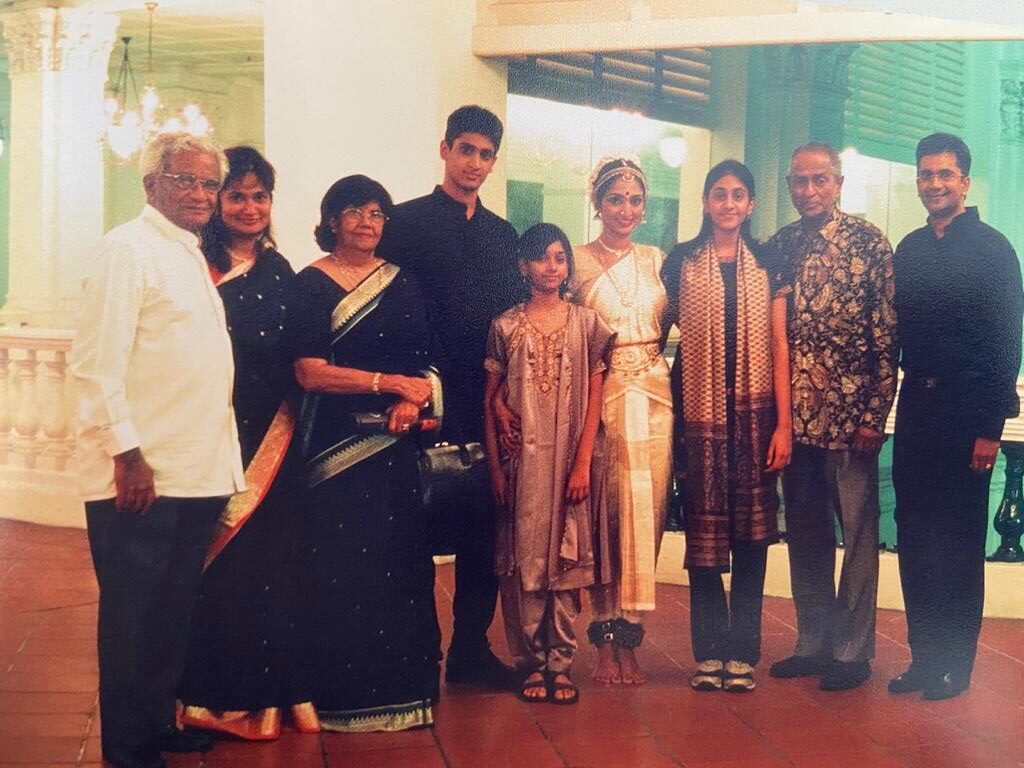

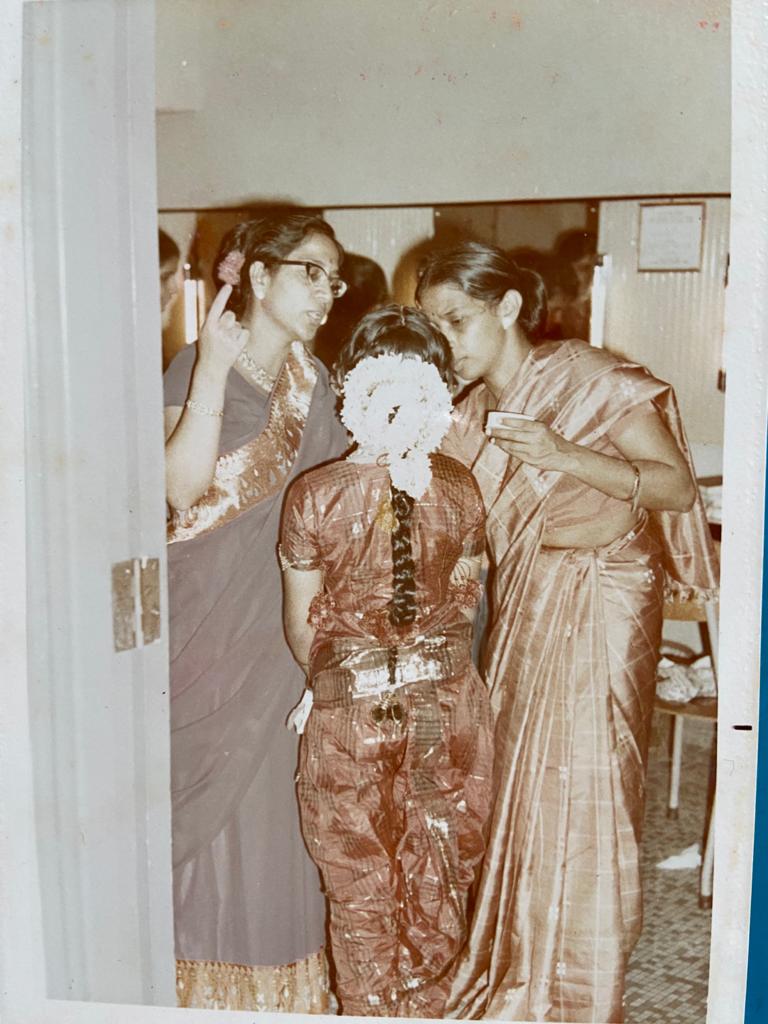
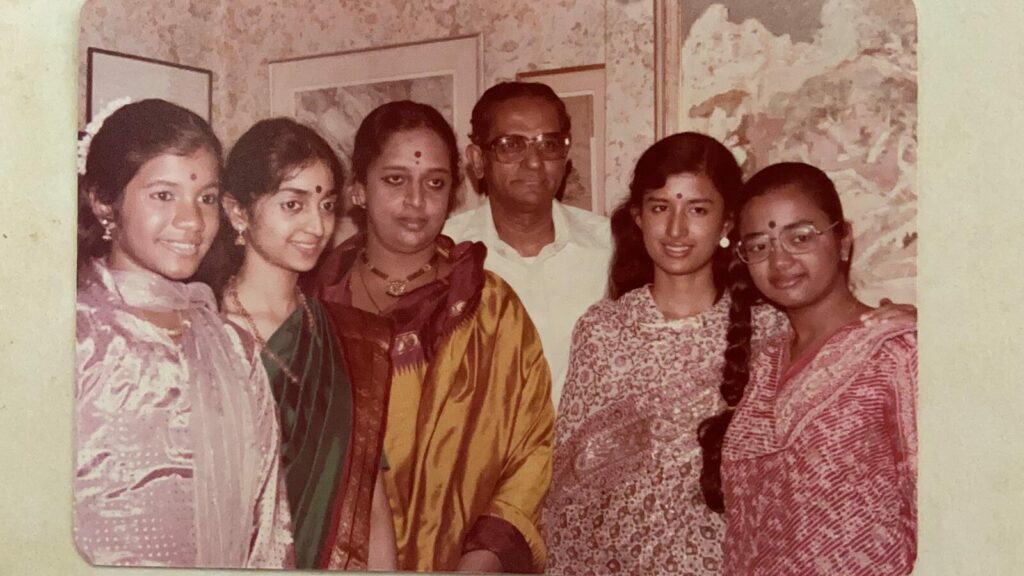
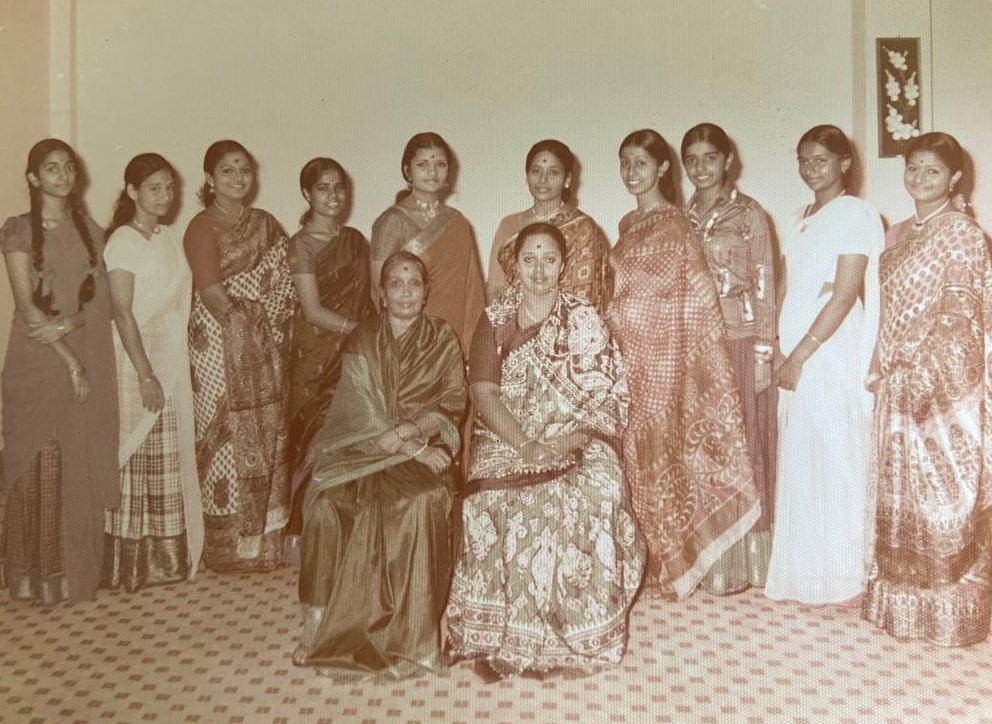
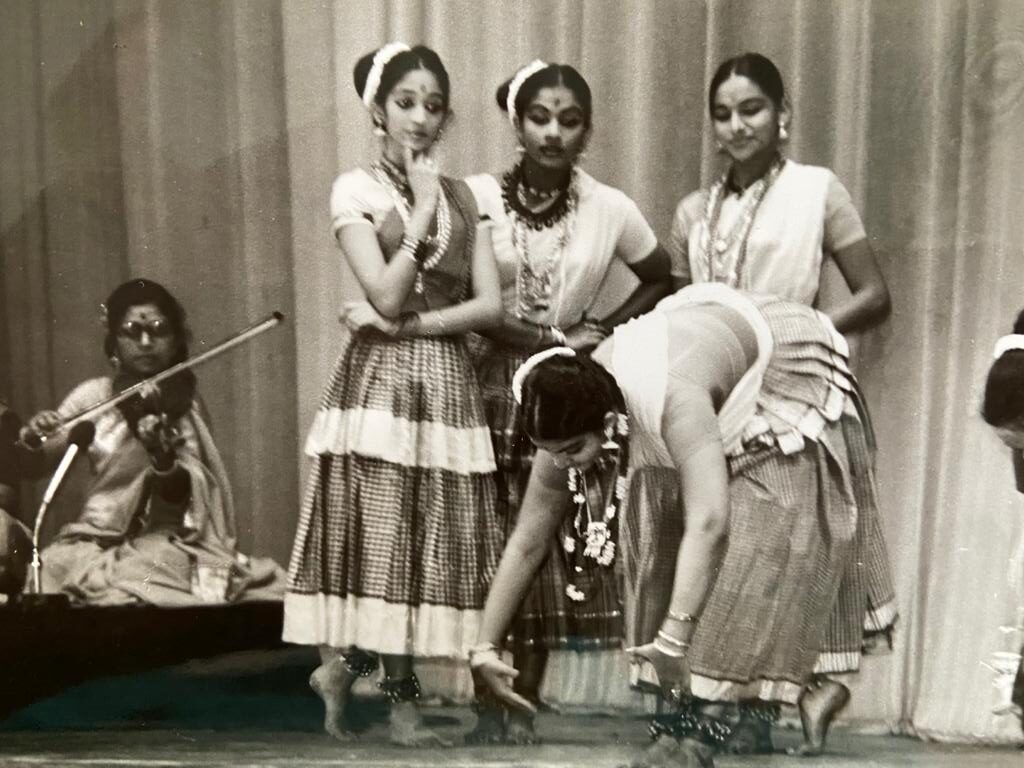
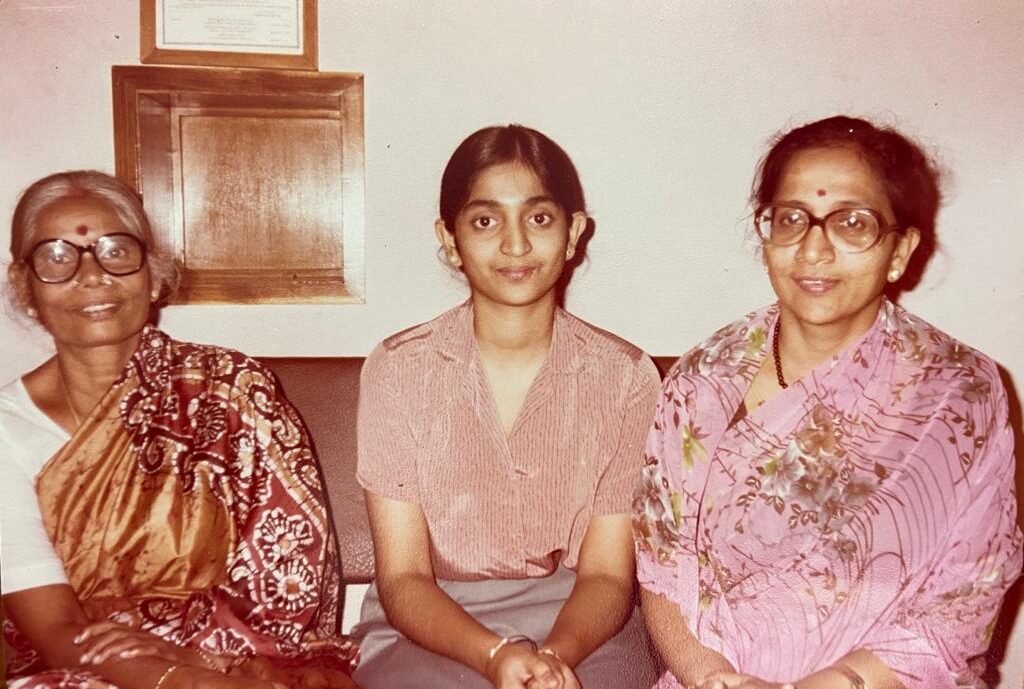
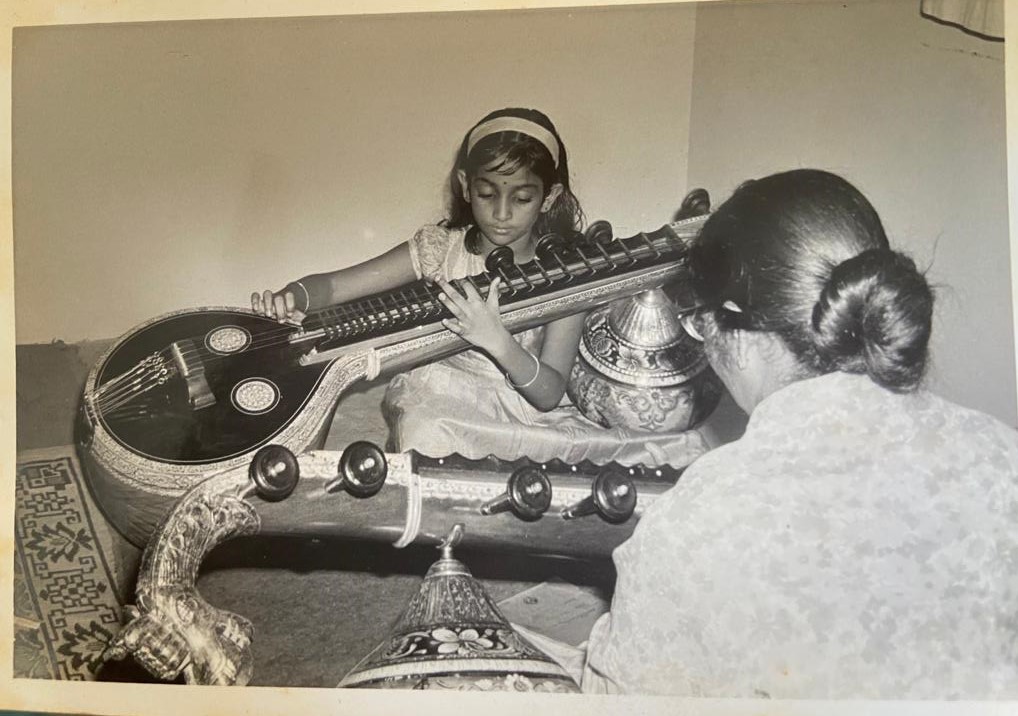
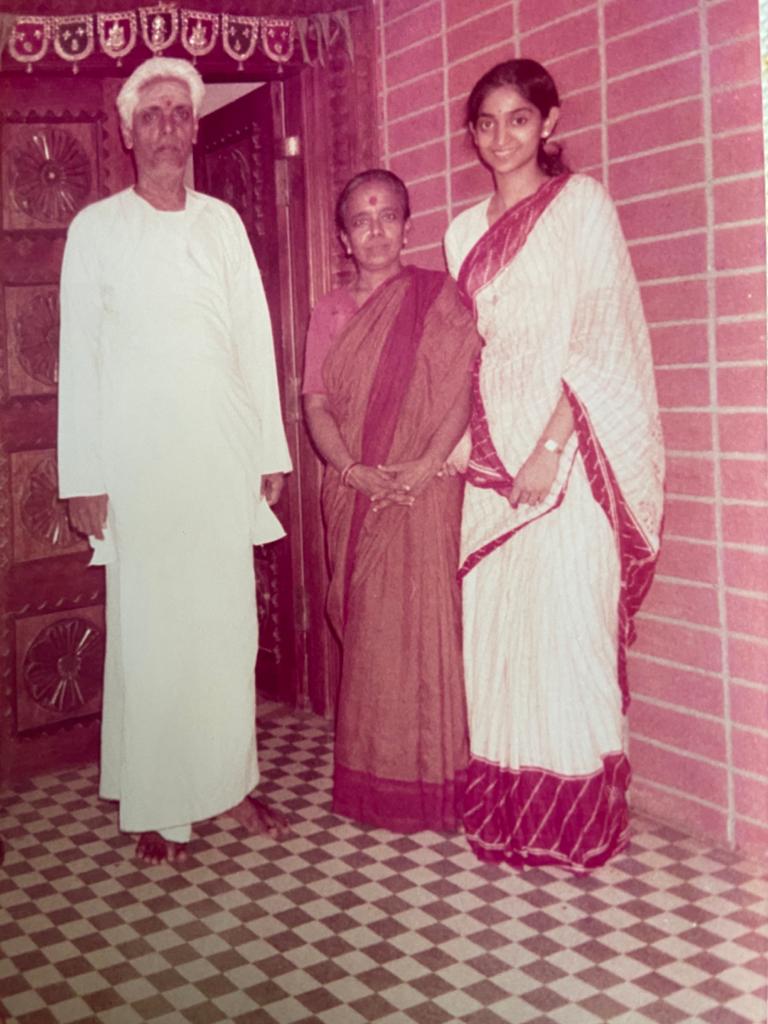
VN:How did you develop your own body of solo work? RPK: Much of it evolved as I observed how my dance was interpreted by a non-Indian audience. My husband’s feedback would often shape my own presentation in this regard as he had no prior knowledge. Much of the Kalakshetra steps have certain specific movements – “Kirataka Tarakitathom “– done on repeat 9 times but to a lay person can appear repetitive and odd. I found myself revaluating what would be meaningful and not just do movements without questioning them. This applied even to Abhinaya items. It’s important to contextualise and do what makes sense. Often when we work with choreographers, we question the movements as dancers. It must resonate. My costume aesthetic is still largely traditional. From the time of my arangetram till now, I have used Ayellu tailor in Chennai. My mother would help me to choose fabric and colours. I don’t like gaudy colours; my preference is for simplicity. Mami’s aesthetics was much more elaborate – more flowers, jewellery but I am more inclined to the aesthetics of dancers like Malavika Sarukkai. Observing and learning by watching dancers. Even today, I’m continuously learning from young dancers on the internet. We have to keep evolving. I watch my own videos, take feedback and do self-correction. VN:Share with us some of your memorable dance works? RPK: : In 2005, circumstances transpired for me to create a production called “One Light” – themed on Unity in Spirituality, entirely on my own. This production was inspired by Sufi mystic Jalaluddin Rumi’s poem of the same name and weaved together stories from the Bible, Buddhist scriptures, the Bhagavat Gita and Islamic elements through Bharatanatyam. With my husband’s encouragement, I took time off my regular work to go to Chennai for ten days to work with artistes there to organise lyrics with Professor Raghuraman, choreography support from Jayanthi Subramaniam and vocalist Radha Badri who came to Singapore along with local musicians. As a vocalist, she was one of the most generous musicians I worked with. She reworked some of the Ragas and wrote it out nicely and handed it to me saying “When another singer sings, these notes will be very helpful to them.” She had an elevated sense of professionalism. I performed this during the Music Festival season at Tamil Isai Sangam. I had performed another production there the year before. I performed One Light in Bangalore thereafter too. It was an act of independence for me. I had no family in India. I asked myself – what was the purpose of these performances? It was to gain the experience of performing at a Sabha, not something I wanted to repeat regularly. In 2012 I presented Sacred Angkor with Neewin Hershall, an excellent dancer whom I really enjoyed working with. After Sathya Sai Baba passed away, I visited the Sai Ashram in Muddenahalli, Karnataka and was asked me to perform for Guru Poornima in 2014. I subsequently performed 2 new works , Dasavatharam and Navadurga for Dasara and Swami’s birthday celebrations there in subsequent years, working with D Srivatsa ( an amazing music composer and vocalist) and other lovely musicians from Bangalore. I was engaged to create Ramkatha and RadhaKrishna, two productions for the children at the Sai Schools, as I had been associated with the social work there [especially schools and hospitals in Karnataka]. I never thought I would teach but the experience with the village girls and boys was very fulfilling. The independent journey at the time made me ponder the question, “Why is dance so important to me?” Why am I being pulled in this direction? The answer came in a chance moment when I happen to glance at a passport photo of my mother from my wallet [ She had already passed away a few years before] and I turned the picture around to find a sticker with Sathya Sai Baba dressed in white holding his hand in blessing. That’s when I realised that I’ve always had both my mother and my spiritual guru’s blessings in dance. I realised that I connect very much to the spirituality in Bharatanatyam. [“One Light” was re-staged at twice at Jubilee Hall and Esplanade in Singapore.] In recent times, my dual identity as doctor-dancer has emerged and I have been asked if I teach in Singapore. There are enough of my friends who teach well and I don’t need to take away their livelihood by starting a dance school. Resources to learn dance and get trained are widely available here. VN: How to you actively continue to engage in dance today? RPK: My recent show with Apsaras Arts – Nava Durga [ performed for Remembering Neila Satyalingam Festival in February 2021] was originally performed in Bangalore. Since then, I have focused on doing dance productions with the Sai students. I received so much Guru Bhakti and love from these children. It has been a life lesson engaging with these children who have taught me so much with their dedication, humility. That’s spured me to now do my Masters in Bharatanatyam which is still ongoing. [ She has earned her diploma in Bharatanatyam from Kalai Kaveri College and earlier the SIFAS diploma in her school years] I enjoy challenging myself. There is so much to study! The practical part is manageable but the theory is quite arduous. I will need to start work on my dissertation soon. All this theoretical and in-depth knowledge is to aid me in teaching more in the future as a Bachelors of Fine Arts (Nrithya) has just been started by the Sai University in Gulbarga. As I have been involved with the village children, to play an effective role in nurturing them, I need to qualify myself so that I am equipped in my role and involvement in creating curricular for these upcoming young dancers. I would need to have a PhD to work (even voluntarily) at the university but I needed to start somewhere. Today, I realised why Sai Baba gave me the Nataraja pendent at 17. It’s not for me to become a dancer but it’s for me to give back. Giving back is an important part of my spiritual journey. Perhaps by the time I’m 70, I’ll be in a position to give back at that level. The universe does conspire to help you. Some of my teacher friends have commented that they have occasionally had students wishing to learn dance quickly so that they can begin teaching themselves! For me, dance is for my spiritual realisation, not for material gain or fame. Through the dance I will discover my soul. In fact, the mythological stories done in dance resonate more deeply now. By being with the children at the Sai Schools, I realise so much of what my soul should be doing. That is my journey. . My greatest inspiration is still Satya Sai Baba. And he is the reason I am still involved in dance. God blessed me with wonderful teachers so that I could reciprocate by giving back to society through the arts. VN:How has your family played a role in your dance journey?RPK: My mother was my biggest support and fiercest critic. She would never say if I did well. She never wanted it to get to my head. She passed away in 2002 when I was 40. If my mother was around, she would have persuaded my daughters to continue their dance. I prefer to let them decide for themselves. My husband is a huge support and also a critic. In some ways he helped me to create for the audience in Singapore, present it in a way for people to understand. My late father loved Indian culture and was both a spiritual and a philanthropic person at heart. He loved telling people about me and would embarrassingly promote my dance. His clinic used to have so many of my pictures! He was really lovely. I loved to see the delight in his face! He wanted my dance performances to support charitable causes. He even helped organise dance for medical conferences. The way arts have been in Singapore has evolved over time. In my youth, I recall Rathi Karthigesu – a trailblazer. She was one of the rare dancers who continued after marriage but people in my mother’s generation considered it an aberration. Now it has normalised. I feel it’s a good trend. Bharatanatyam is not an art you can finish learning. My daughters are a huge support, always there to encourage me. They help to dress me up when I perform! Isn’t that so cute? They are nurturing me! My daughter-in-law wants me to teach the grandchildren. VN: After so many years of performing and training, how do you keep your body, mind & emotions balanced ? RPK: The most important thing is to stay happy. I can only create when I am happy. I can’t think of anything if there are negative emotions. By and large, I am a positive person. It’s important to keep feeling inspired. I’m always looking out for good dancing to watch. I love to dance. The energy, connection to the audience on stage matters. My routine is not to practice too much. I feel it’s bad for the body. Just 30mins of vigorous dancing but I do spend a lot of time thinking about dance. I believe in giving the body a rest. I often dance better two days after. I do yoga stretches regularly. Now time is a premium as I have been busy minding my grandchildren [ She has 3 – two girls and a boy] and due to COVID-19, I’m not working full-time at the clinic so I can focus on my Masters in Bharatanatyam. I’ve always been cautious about my diet, having been a vegetarian for some years now. I’m careful with my knees. I know what I should not do. Professional dancers like Priyadarshini Govind are very clued in to physio. When you watch Alarmel Valli, she floats across the stage. She has always been petite – maintaining her shape and size. The Kalakshetra style will kill your body if you dance continuously. Perhaps Prof Chandrashekar can but these days I see, acrobatics seems to be the norm. Dancers like Rukmini Vijayakumar have a lot of knowledge about contemporary movements. You need to devote your life to dance to develop that. When I was learning there was no awareness that without stretching, injuries happen. Time needs to be spent to stretch both before and after class otherwise in the long term, it’s bad for the body. These days, I would not do a full Margam as there are many ways to express. I love Abhinaya but also enjoy movement in Nrita. I’m inspired by Shankar Kandasamy. A brilliant artist and he moves amazingly for his age. I’m not sure how long more I can dance but movement is also important to allay arthritis. VN: You’ve come a long way. Can you share with us your impressions of the Bharatanatyam scene in Singapore? RPK: The quality of Bharatanatyam in Singapore, across the schools here is of a good standard. I was surprised to not see this level of quality in many dance students in Chennai! Not everyone is a good teacher and not every parent is aware of the art. Even there it is a niche genre. Many of the dance students here are first generation. They may be born here but they have immediate roots in India, with grandparents, extended family. The mother must be there for support, somehow that’s key. What I don’t see enough of are dancers whose mothers are born in Singapore. This is disappointing. Dancing is an expensive activity. It is still a privileged activity. I am a woman of privilege. I have been blessed to be in a family who could afford to send me to dance class, afford to buy dance costumes, offer to pay for my arangetram [ although the cost of mine must have been pittance to what it costs today]. It shocks me what the arangetram has become. I was so happy to know of Soo Mei Fei’s arangetram being supported financially by Apsaras Arts. That is like wow! That is how it should be. The arangetram is supposed to be simple. Now the considerations are varied – do you have to give food, jewellery gifts? I have heard all kinds of horror stories in Singapore. Costs upwards of $20,000. I’ve heard about arangetrams where the venue was booked for 2 days! Rehearsals at $7000 per night for the venue! For what? How many parents have that kind of money to spend! Why must an arangetram be in some fabulous theatre? The situation is worse in America! I hear from the Bangalore musicians who laugh about it although they actively participate in it. They do it like a wedding. Singapore must not become that. How can students from middle or lower income families ever hope to compete with the children of high earning professionals like bankers. We need to re-evaluate. Why can it not be simple? If a school has its own stage and a diploma student wants to do an arangetram , encourage for it to be done on premises. Set a limit for the expenses. No gift needs to be given. If giving, give out of the goodness of your heart. It should be based on what the parent can afford. Not comparing with other parents. The student dancing itself is the greatest gift because the art is being propagated. Imagine if the teacher taught that way. Imagine if we all went to the school hall to watch. A free venue. Why do you need a fancy lighting person? Musicians are all available locally. Why must they collect a high fee? Some money can be given but not in excess. I know of some students who did not do an arangetram because they didn’t have that kind of support. If the parent wants to glorify the child through the artform with elaborate choreography and teaching from outside the syllabus, there is something wrong. Do parents get to dictate to teachers what to teach in a music arangetram? In a music arangetram, we will listen to the same song over again. Will there be commentary on why the same kirtanam is sung again? Why is it that only for dance the expectation is there for a thematic arangetram? Why can’t the same pieces be presented over and over again? The whole system is flawed. You see nowadays youngsters who are learning already posturing like they are so great with a big ego. What to do? The world has become like this. The internet is here. Everyone wants their own YouTube channel. The teachers must teach the standard Margam and advise if the student delivers it capably. There is double standard for Music and for Dance. For music, the expectations are clear. Pronunciation, pitch, expressions irrespective of which song is selected. For dance there are other factors. Looking at a pretty costume, the pretty face. It’s up to the arts industry people to help rethink what is art, what is the reason why people are learning the art. It is to appreciate the culture, to know the truth within the culture so that you connect to something deeper and cultivate values. How can you teach your child values based on “I am the better dancer” “Why I didn’t get the chance” “Why has my friend got the main role not me?” Why am I dancing for 2minutes and my friend gets to dance for 10 minutes?” This cannot be the case. Who is going to change this? It has to be a collective. We shouldn’t firstly glorify those who do grand arangetrams. You hear of parents who engage people to go around to ask for feedback about an arangetram! This has long term detriment for the child because what are you nurturing in the child? I would not bring up my children or grandchildren like this but there are plenty of young mothers who think that is the way. YouTube and Internet have shown them the way of publicity. The child may be very talented but this is not correct. Maybe I’m old fashioned. My mother was my biggest supporter and critic but she taught me to value the art. I’ve never been someone interested in dressing up but Bharatanatyam requires it. I enjoy my dance best in my exercise leggings and a kurti. Ordinarily I don’t even look like a dancer. In all the years I learned dance, the dance was in itself beautiful. The dance was not there to make ME beautiful. I did not learn the art so that I will be perceived to be beautiful. I know of a dancer who’s now in her 40s. She’s plump but I can watch the video of her dancing again and again and again because of the nuances, the way she moves, even the way she sits and gets up. She has brought in the essence and beauty of the art. And it’s not about her. We have misunderstood what the art is about. Is it about that pretty dancer? The evaluation has to happen: why are we teaching this art? But the world has become like this. Even in medicine, everything has become commercial. Everything has changed. Perhaps my views are archaic. People have to first start by not thinking an arangetram has to be lavish. It does not have to be unique. No need. It’s a starting point – perform for 2 hours. Learn a full Margam and grow to have the confidence to share it and it can be shared in any space. It’s not necessary to churn out new pieces all the time. The competitiveness between students and institutions is unhealthy and should be discouraged. This is not a very good direction. When a bar like this is created, you cause many insecurities among the teachers, institutions, parents and children. People should be patient to watch the same thing again. When a new person does it, a new colour is brought to it. Arangetram has become part of the CV. It is hard to change such mindset. There might be few able to think carefully but may be under peer pressure to join the herd. You have to have people who break away from this. It is the culture of the identity of the dancer. You need an enlightened teacher to help this change.
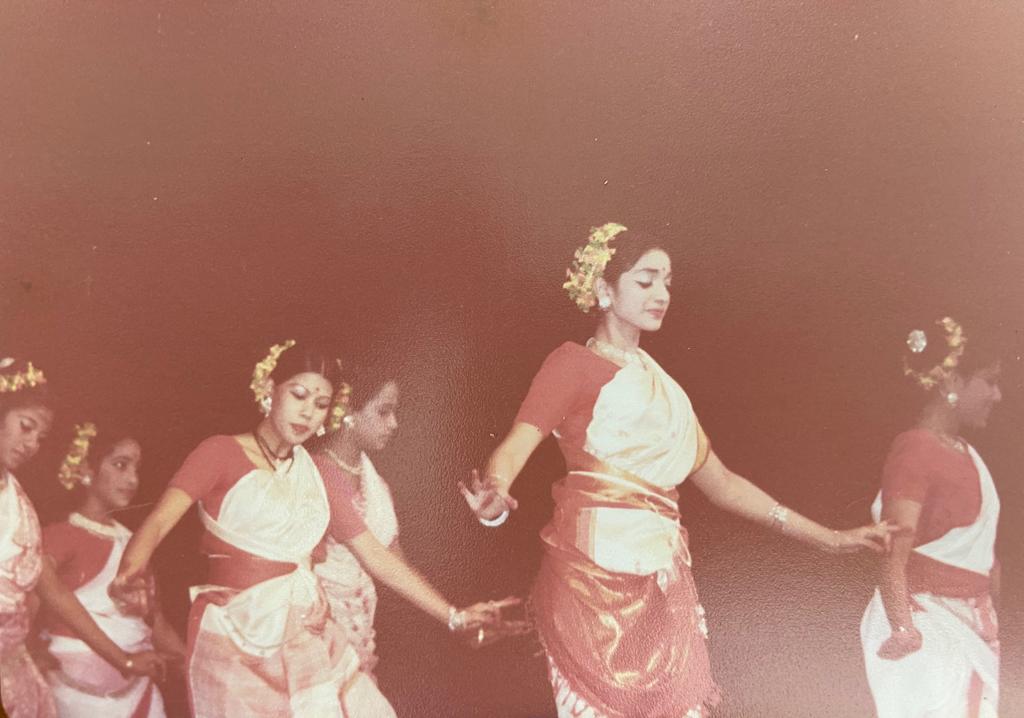
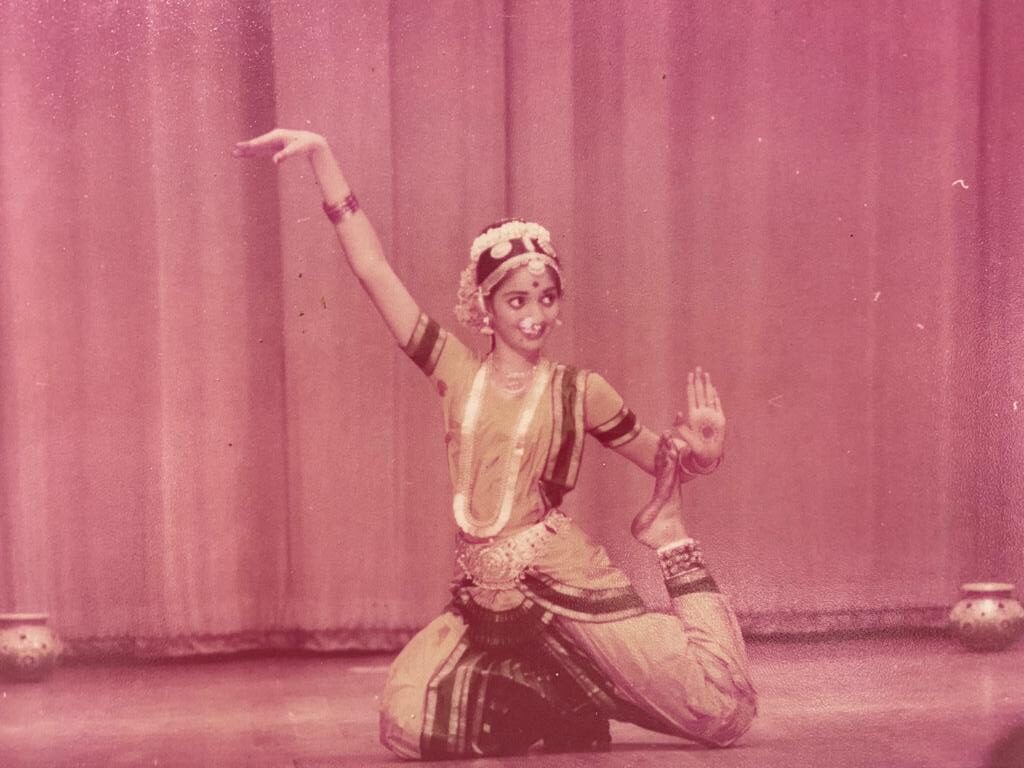
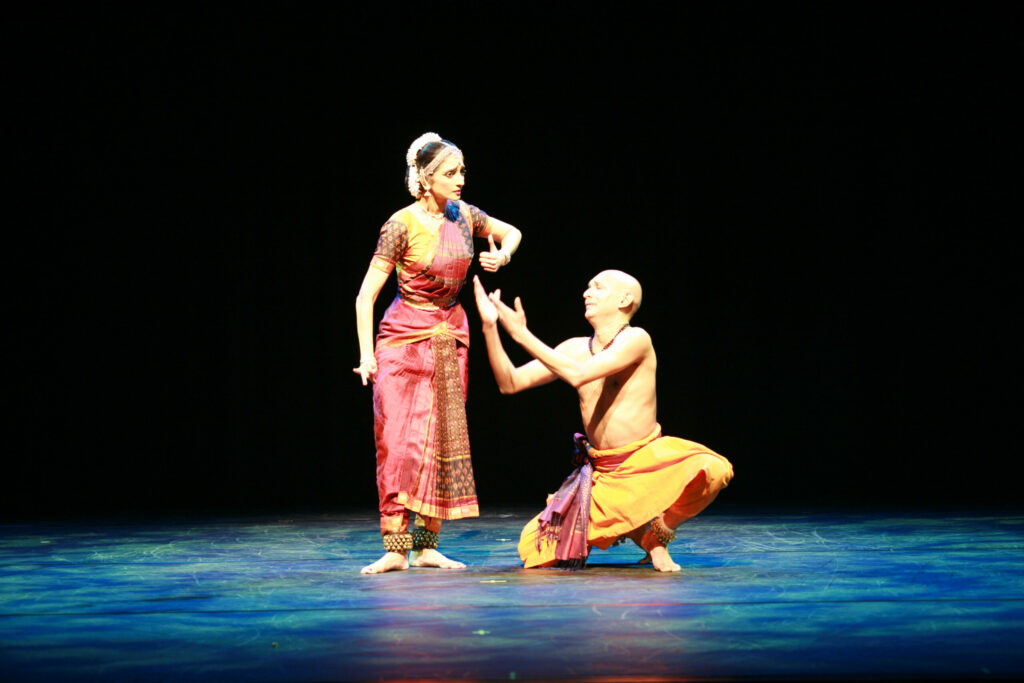
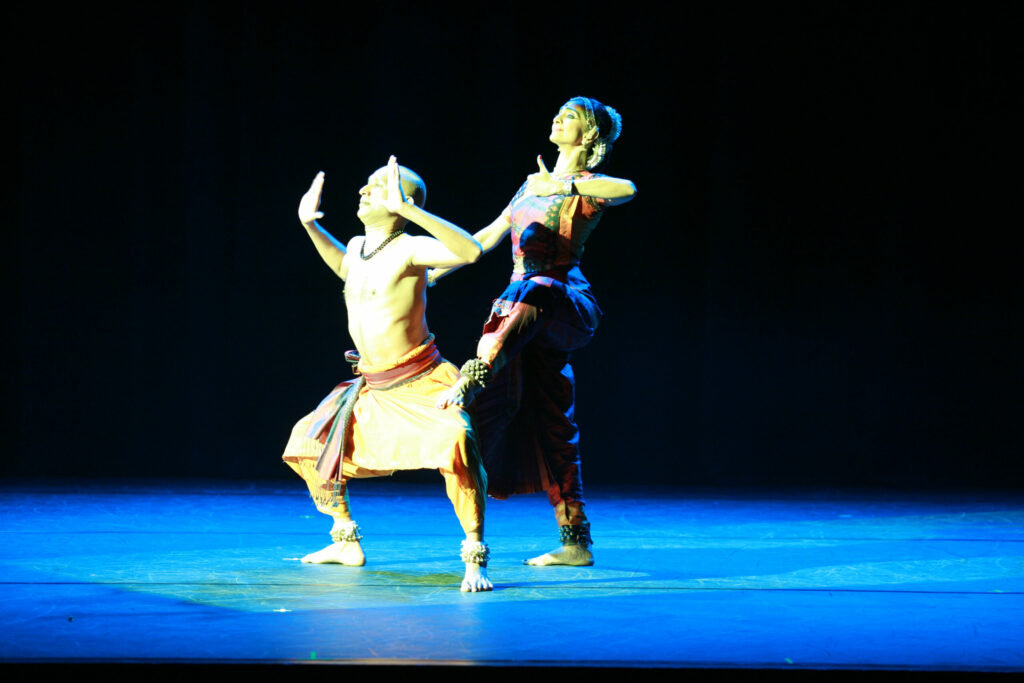
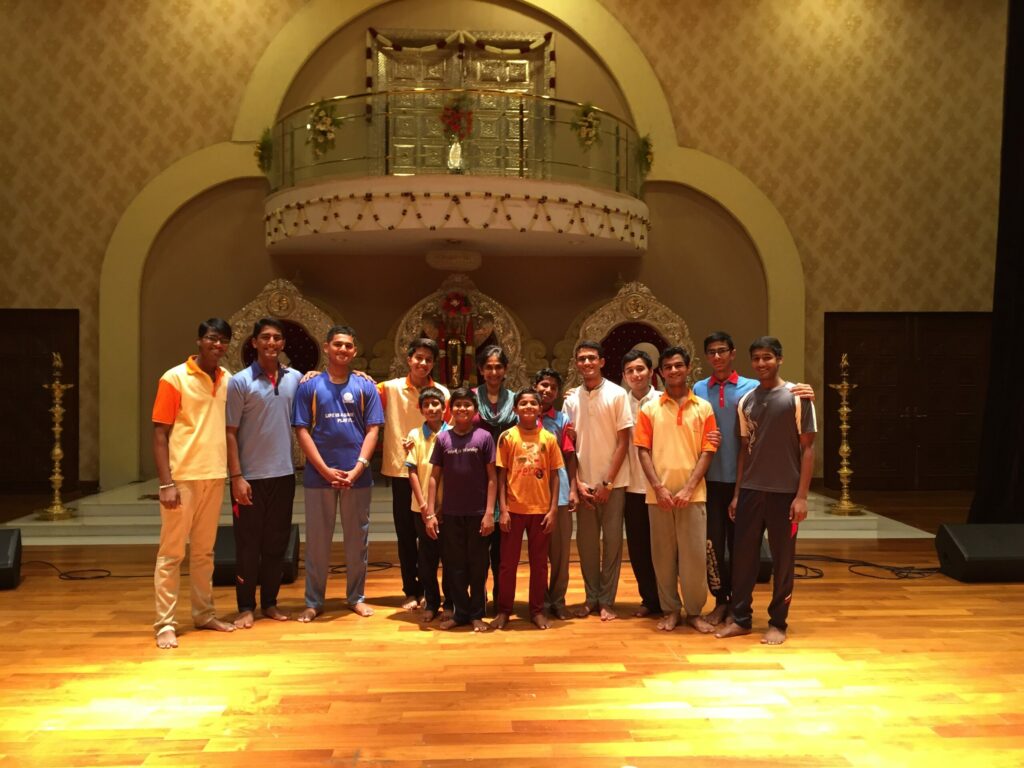
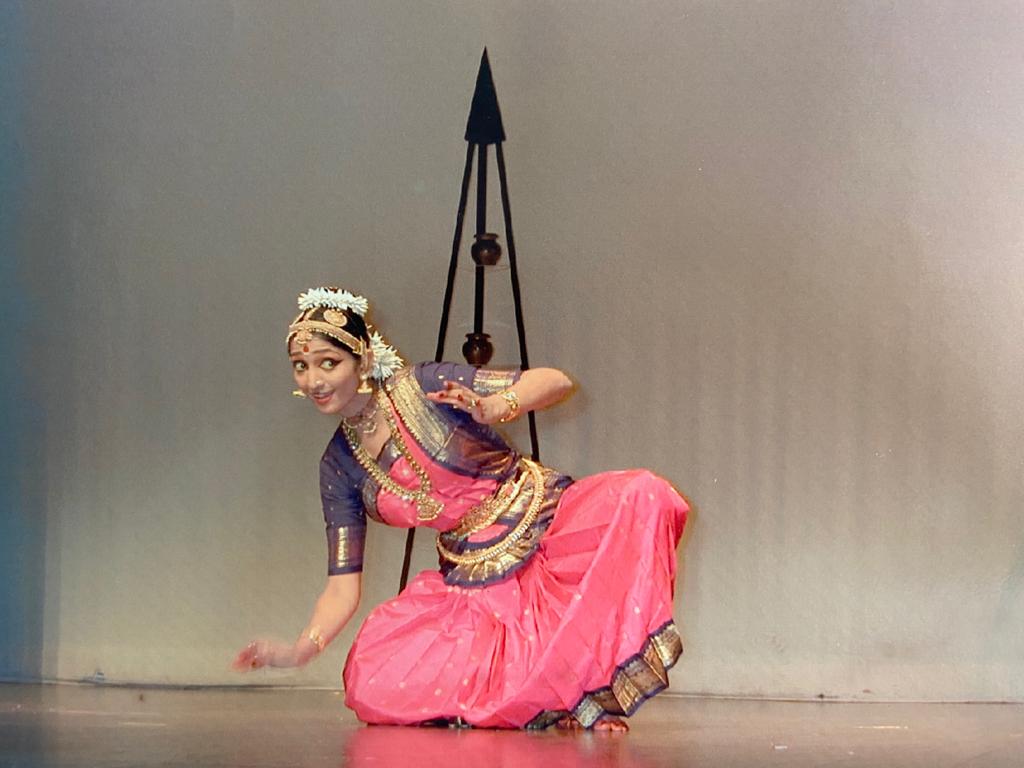
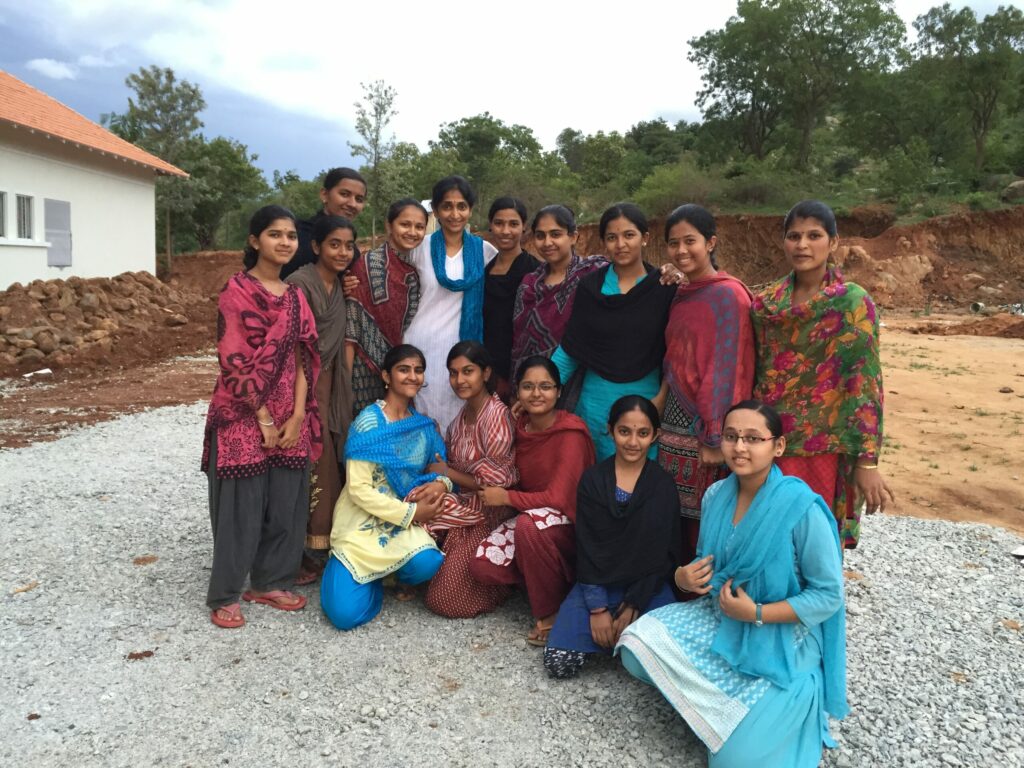
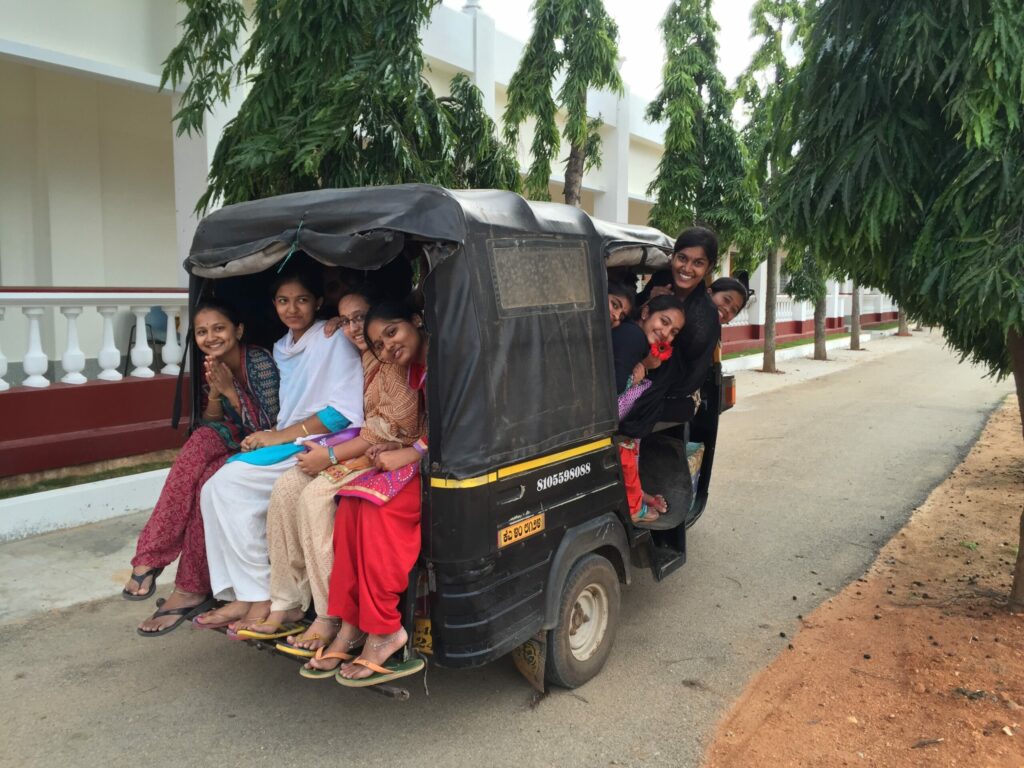
VN: What is your relationship with Apsaras Arts today? RPK: Today it’s a Dance Company. There were already glimpses of it from the start. I recall my first Australia trip for the Melbourne Dance Festival when I was 20. It was lots of fun. I remember the coining of the name Apsaras by Mama. I came back to work in “Heroines of Raja Ravi Varma’ in 2011 in a solo role. I was delighted to be back. We travelled to Chennai to perform. It’s not easy to rehearse and dance in an ensemble, lots of time commitment is needed. I was offered Angkor but I couldn’t participate because of work and family but Aravinth called me for Anjaneyam and accommodated me into the schedule. Many of the company dancers are very competent. How I miss Mami! Still, it’s wonderful of her to have passed the baton on. She was a true artist. She wanted continuity of the art. I’m happy to see how the company has grown. DIAP is the most amazing initiative which began 10 years ago when Mami was around. I have been a delegate and an observer. There is a lovely energy. In the past, she did it in capsules – Adyar Lakshmanan & Krishanaveni Lakshmanan. We even learned Odissi techniques from Chandrababu. It’s an important exposure. I wonder whether young dancers realise the value. I realise that delegates fly in from overseas to attend but not enough Singaporeans participate. It is a very useful opportunity and rare to get these dancers to teach. Mami knew how to share the art and be inclusive. Aravinth continues the same ethos. Dancers may come and go in a Company, it doesn’t matter. I also appreciate the collaborations with other dance forms. I would love to come back to dance with the young ensemble! VN: Lastly, do you see viability in Singapore to be a full-time dancer? RPK: It is viable but you can’t have too many dance companies. Some contemporising of our dance is already happening. Agathi is a good example. It’s the kind of direction I like. We see Ballet & Chinese dance companies. They survive because they have funding to do shows overseas at festivals. But our community is so small. Yet people can say they cannot come to watch! Only a handful of people come for everything. Somehow the rest can’t move themselves to come. Then there is undue competition which makes no sense. People will come for an arangetram but not pay to watch a ticketed show. I recall a conversation when buying tickets for Kala Utsavam at the Sistic Box Office. Phantom of the Opera was selling for $200 and Indian dance shows were only $25. The box office staff said – “Because making it any higher will make it expensive. You Indians can only pay so much”. How can the arts survive if the ticket is only $25? And asking for a discount too! It’s a real deterrent for putting up a show; from putting up posters everywhere and calling people up to come. And you have people saying – can you send the ticket to my house? I’ll pick up at the door! You bear the risk that they may not come. I do like what Apsaras Arts is doing now – collaborating with and being presented by Wild Rice. We need to have more of these things. To be viable, dancers need to be presented at overseas festivals so that through the year, there is at least one program overseas and other months in Singapore with other nationalities watching the shows. I did a workshop on Indian dance to a group of Chinese a few years back, with 70-80 medical professionals and others. All this while, they only had talks about South East Asia without including India. I explained to them about Indian culture and the dance. They were amazed at the depth which they don’t find in Chinese dance. They enjoyed my performance because of the lecture. I also find Arts Education in school ineffective. Watching at assembly serves no purpose. We need arts education for adults as well. People who are interested. Advertising for shows is a very costly affair. Overseas, we see billboards and marquees to get people interested. Where was the advertising for Anjaneyam ? It’s not seen. Sadly, after all the effort and cost, it was only presented for one night. We need good quality dancers, good ideas, first class presentations and to move out of Singapore. You can’t be a full-time dancer just being limited to Singapore. For a woman to have family and be an executive, they don’t see their children. They travel for full-time work. A dancer can do the same if she is committed to her art but she needs the opportunity. The company can’t make money if it doesn’t do enough shows. Far more people need to attend. People seem to prefer plays which seem to have a longer run. They can connect and understand. They find it entertaining and relaxing. Music probably does better. Indian classical dance is not that easy to watch. Contemporary dance companies get more opportunities overseas. The marketing for Indian dance is so important. Some doctors are doing marketing now too. My father used to be very offended to see doctors advertising but the world has become like that. Dance companies need to invest in marketing. Online dance shows can be done. Building an audience space is important. So, leaving it to within Singapore – you cannot nurture full time dancers. The dancer will need to fall back on teaching or another profession and call herself a part-time dancer. By what means do you call yourself a professional full time dancer? Surely a professional dancer needs to earn a decent level of income and have a certain level of work on monthly basis. It’s a very difficult area, it needs nourishment and growth. VN:What’s been your greatest take-away in being a lifelong dance student? RPK: This is what I have learned and believe in: If you learn an art and are able to pass it on, there is value to that art. Not everyone has that ability. If you get the opportunity to give it back, then it will not be wasted. I have been trying to develop myself to do that. All you need is desire to do something in the arts that’s not about you. Then it is important. Then there is relevance. A gift received: so it needs to be given to another.









